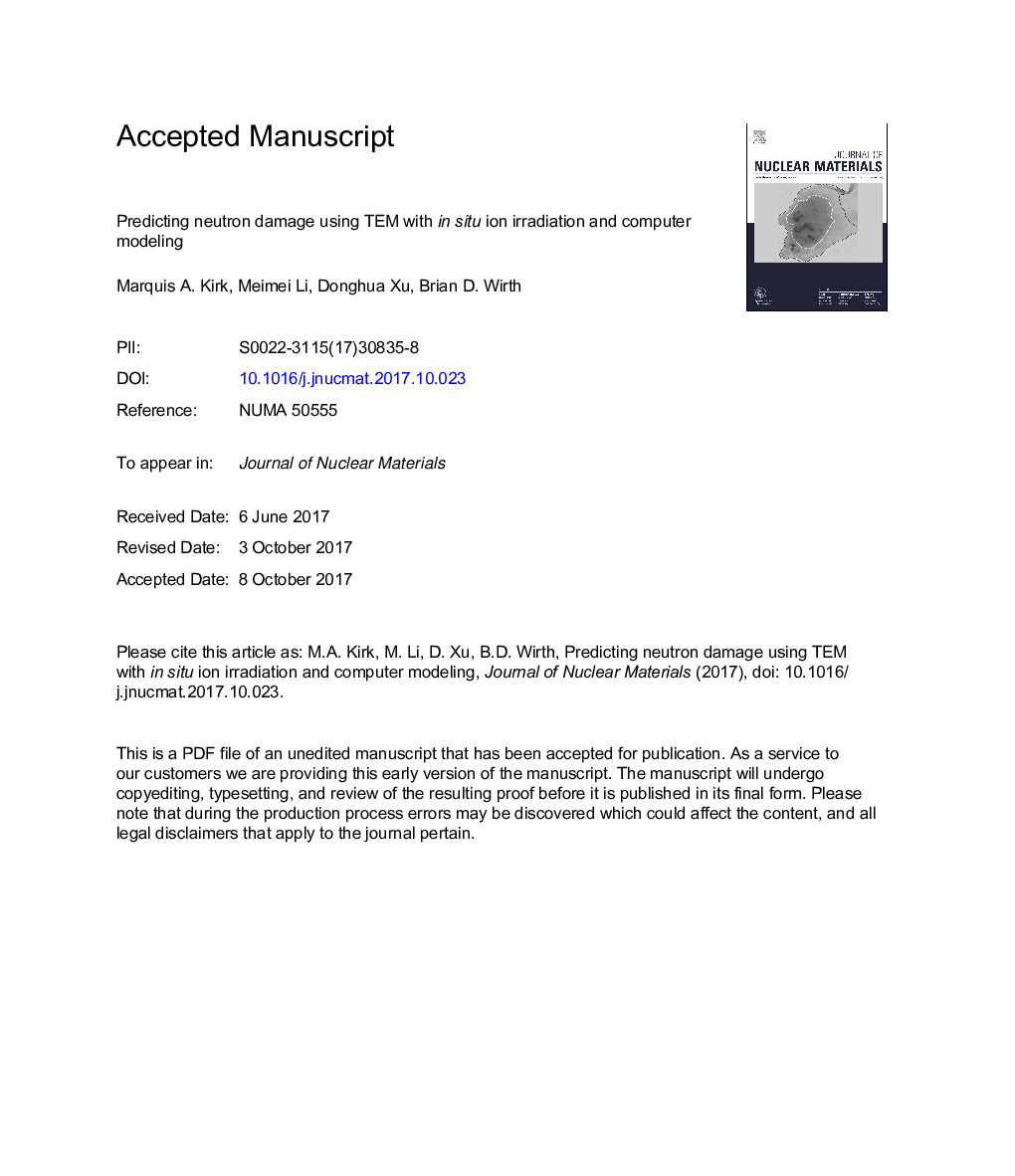| Article ID | Journal | Published Year | Pages | File Type |
|---|---|---|---|---|
| 7963662 | Journal of Nuclear Materials | 2018 | 44 Pages |
Abstract
We have constructed a computer model of irradiation defect production closely coordinated with TEM and in situ ion irradiation of Molybdenum at 80 °C over a range of dose, dose rate and foil thickness. We have reexamined our previous ion irradiation data to assign appropriate error and uncertainty based on more recent work. The spatially dependent cascade cluster dynamics model is updated with recent Molecular Dynamics results for cascades in Mo. After a careful assignment of both ion and neutron irradiation dose values in dpa, TEM data are compared for both ion and neutron irradiated Mo from the same source material. Using the computer model of defect formation and evolution based on the in situ ion irradiation of thin foils, the defect microstructure, consisting of densities and sizes of dislocation loops, is predicted for neutron irradiation of bulk material at 80 °C and compared with experiment. Reasonable agreement between model prediction and experimental data demonstrates a promising direction in understanding and predicting neutron damage using a closely coordinated program of in situ ion irradiation experiment and computer simulation.
Related Topics
Physical Sciences and Engineering
Energy
Nuclear Energy and Engineering
Authors
Marquis A. Kirk, Meimei Li, Donghua Xu, Brian D. Wirth,
